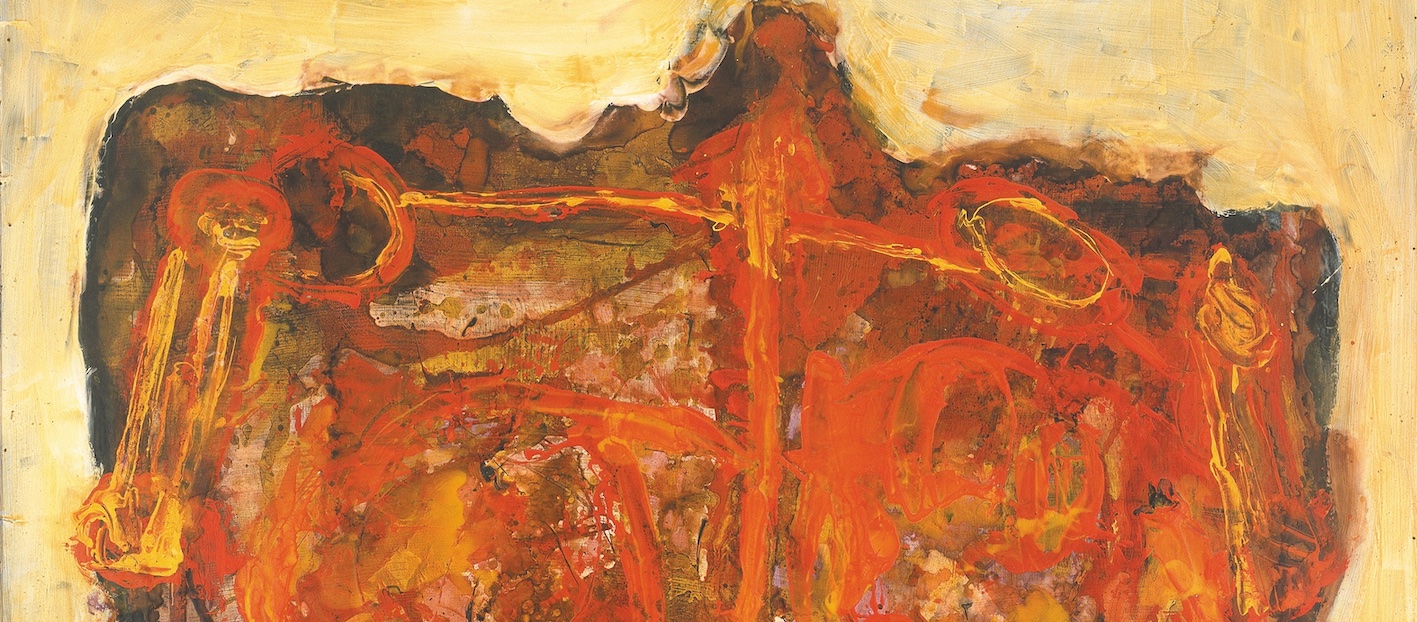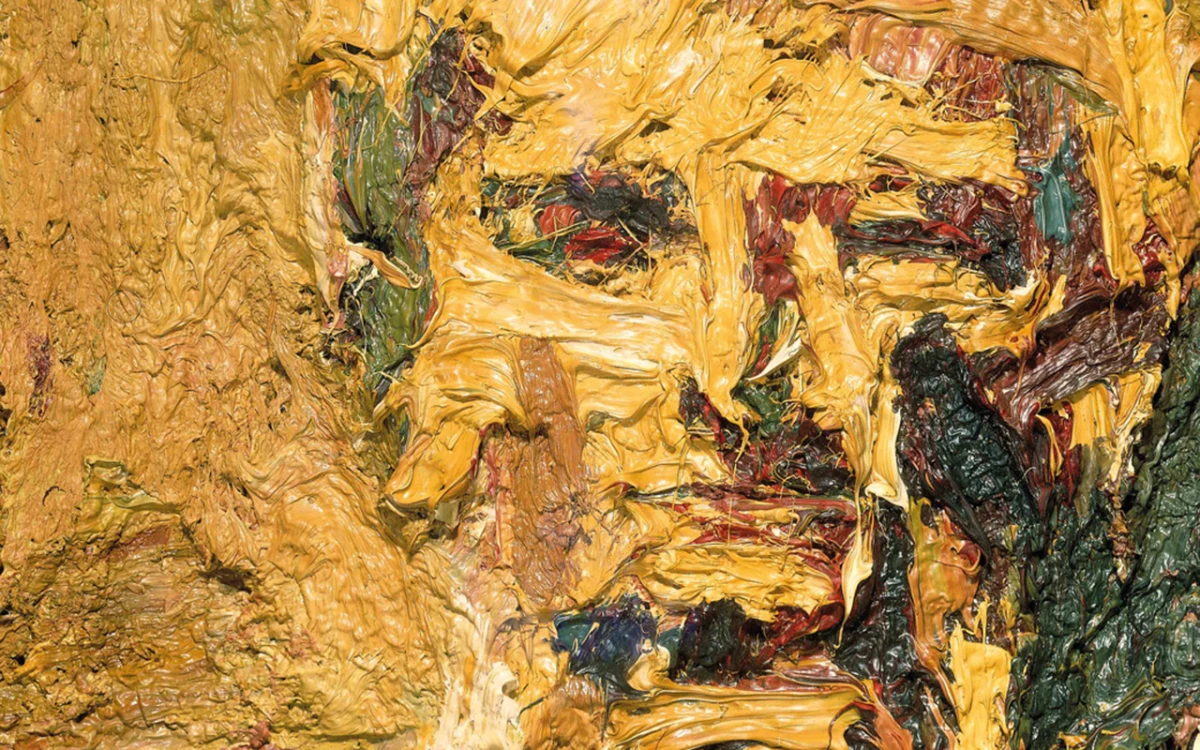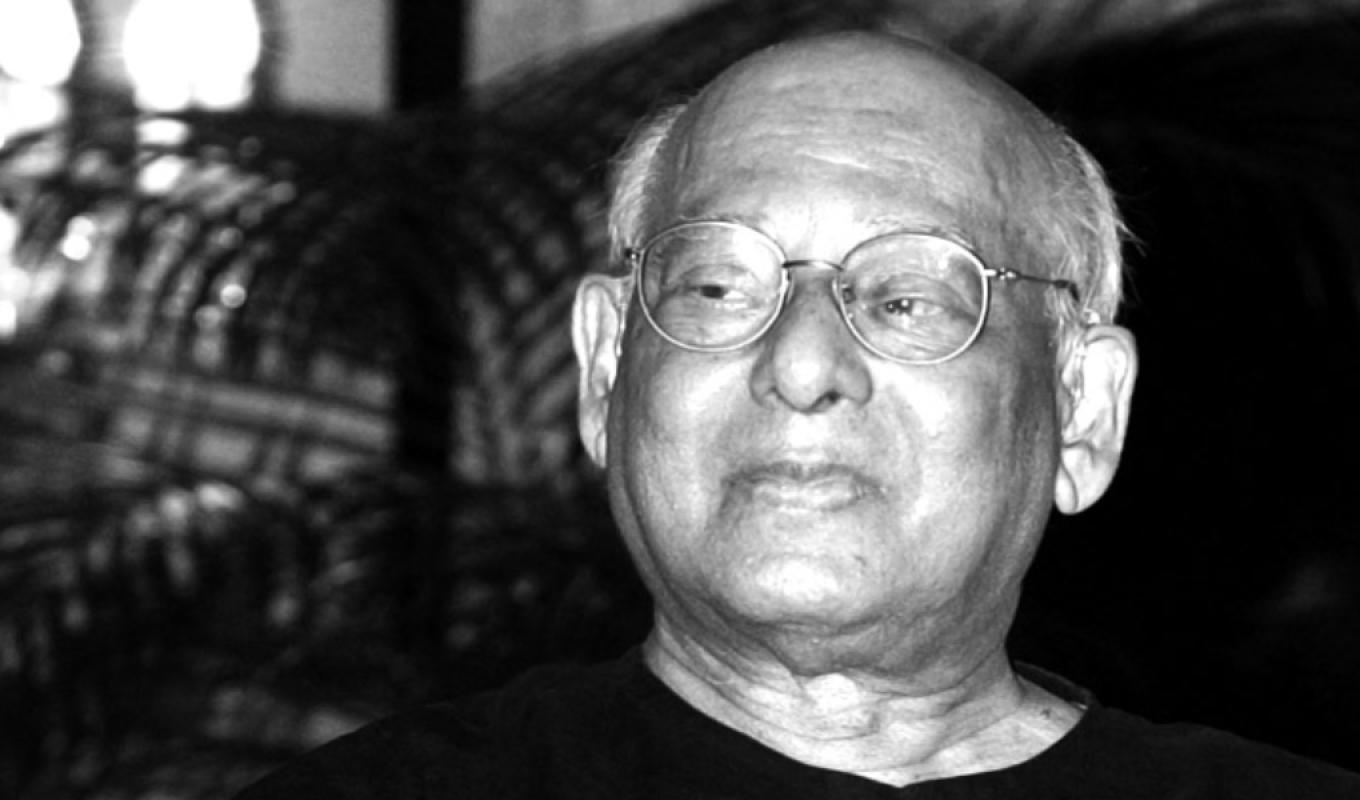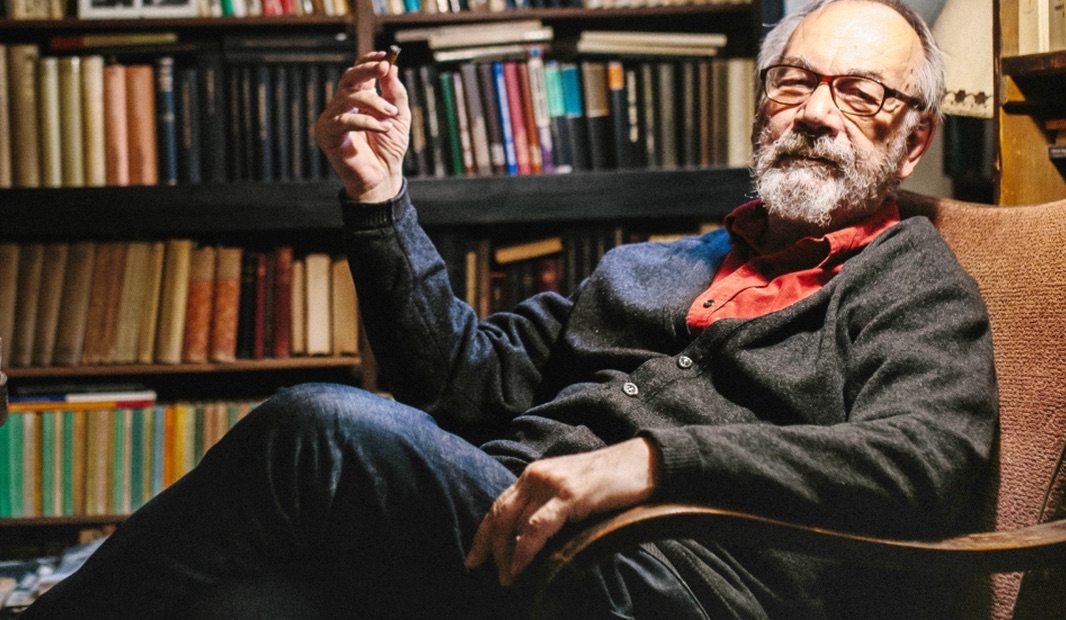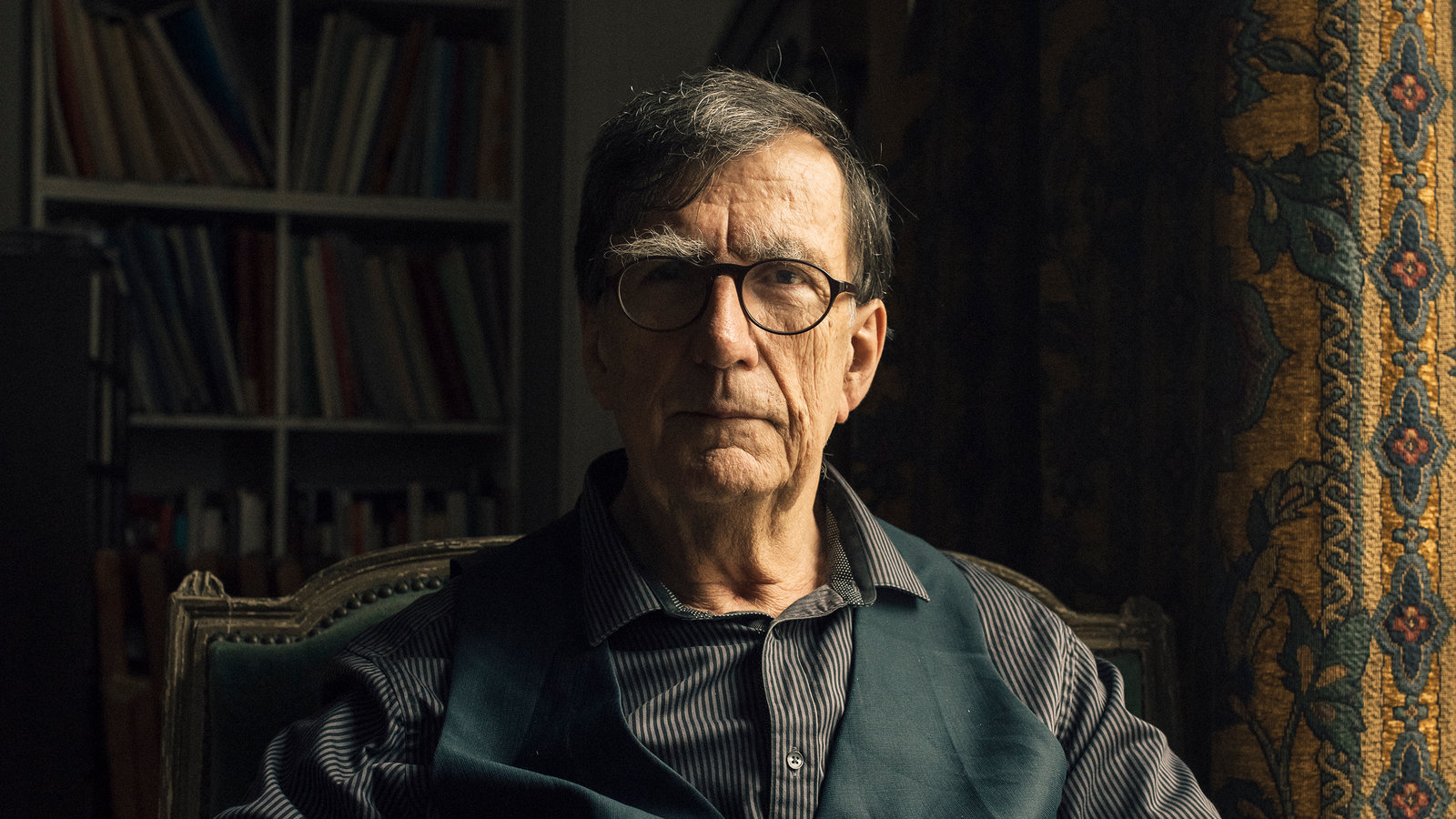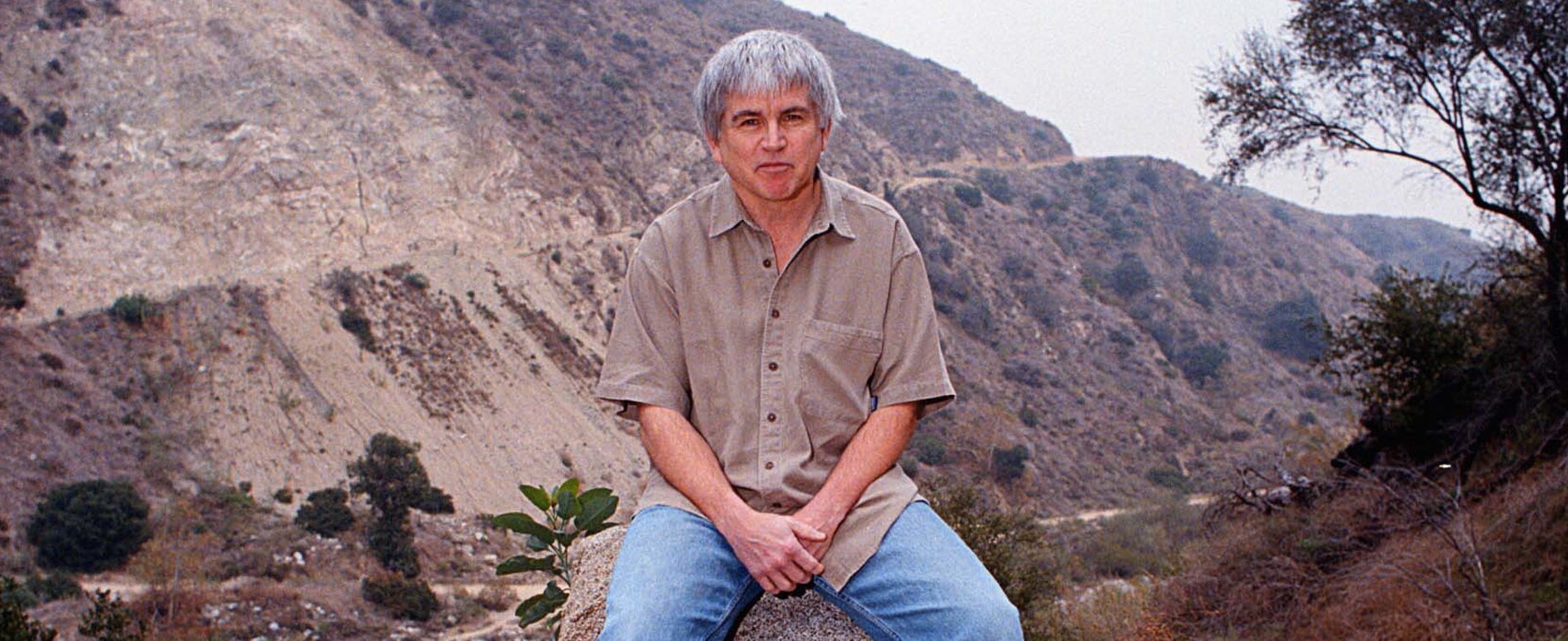When the multi-hyphenate scholar of science Bruno Latour died last October at the age of 75, tributes poured in from all corners of academia and many beyond. In the aughts, Latour had been a ubiquitous reference point for Anglophone social and cultural theory, standing alongside Judith Butler and Michel Foucault on the list of most cited academics in fields ranging from geography to art history. Made notorious by the ‘Science Wars’ of the 1990s, he reinvented himself as a climate scholar and public intellectual in the last two decades of his life. Yet amidst the expressions of appreciation and grief, many on the left shrugged. Latour’s relationship to the left had long been fraught, if not entirely unsatisfactory to either: Latour enjoyed antagonizing the left; in turn, many leftists loved to hate Latour. His ascendance in the politically bleak years of the early twenty-first century was to many damning. And yet as he sought to respond to the political challenge of climate change in his final years, he turned, in his own deeply idiosyncratic way, to consider questions of production and class; transformation and struggle.
Latour was candid about his own background, readily acknowledging he hailed from the ‘typical French provincial bourgeoisie’. Born in 1947 in Beaune, Latour was the eighth child of a well-known Catholic winemaking family – proprietors of Maison Louis Latour, known for their Grand Cru Burgundys. With his older brother already slated to take over the family business, Latour was sent to Lycée Saint-Louis-de-Gonzague, a selective Jesuit private school in Paris. A leading placement in the agrégation led to a doctorate in theology from the Université de Tours. Twenty-one in 1968, Latour could be found not in the streets of Paris but the lecture halls of Dijon, where he studied biblical exegesis with the scholar and former Catholic priest André Malet. He wrote his dissertation on Charles Péguy, while working in the French civilian service in Abidjan, then capital of Côte d’Ivoire. There he was charged with conducting a survey on the ‘ideology of competence’ for a French development agency seeking to understand the absence of Ivoirians from managerial roles, while reading Anti-Oedipus by night. (‘Deleuze is in my bones’, he would later claim.) Racist attitudes, Latour’s report argued, were an obvious barrier to Ivoirian advancement. But these attitudes, in turn, produced other effects, a phenomenon which Latour described as the ‘creation of incompetence’: Ivoirians were placed in positions where they had little chance to become familiar with key technologies. ‘How does this factory or this school actually function’, Latour asked, ‘if one examines the circulation of information, of power, and of money?’
Following the ‘historical epistemology’ of Gaston Bachelard and Georges Canguilhem, postwar French philosophers from Louis Althusser to Foucault were intensely concerned with the status of science and truth. Though Latour shared this broad thematic interest, he thought historical epistemology insufficiently attentive to actual scientific practice. Consequently, his original intellectual home was not among the philosophes, but rather the foundling Anglophone field of ‘social studies of science’, which emerged from Britain’s sociology departments in the 1970s before quickly extending its influence into the United States. Its basic conceit was to complete the Durkheimian project for a sociology of knowledge by explaining even the rarefied content of science itself through scrutiny of the mundane social practices by which it was produced. In contrast to the French epistemologists’ efforts to distinguish the conditions of ‘true science’, the reigning principle of the ‘strong programme’ – the core method developed at Edinburgh – was symmetry: both successful and failed scientific ideas had to be studied via the same methods. It was the concrete workaday routines of what Thomas Kuhn had called ‘normal science’ that Latour described in his first book, Laboratory Life (1979), co-authored with the British sociologist Steve Woolgar, about the work of the scientists of the Salk Institute, the private biological sciences laboratory based in La Jolla, California. Drawing on his ethnographic experiences in Abidjan, Latour spent two years, from 1975-1977, as a would-be anthropologist observing the lab of Roger Guillemin, a French neuroscientist whom Latour had met in Dijon, and who would in 1977 win the Nobel Prize in Medicine for his work on hormones.
Going from the ‘laws of science’ to the lab is, Latour would later argue, like going from the law books to Parliament. It reveals not a space of rational insight but of fierce debate, controversy, messiness, mistakes – of knowledge produced by human beings rather than disembodied minds. Accordingly, the book opens in medias res, plunging the reader into the laboratory as narrated through an observer’s notes. Laboratory Life claimed to undertake a material analysis of the lab not by tracing its funding sources or the usefulness of its findings to industry, but by mapping the actual physical space of the laboratory, taking an inventory of its equipment, detailing the labour of lab technicians. Latour’s exegetical training in Dijon also informed his study: what the laboratory really produced, he argued, was texts. Scientists were constantly making and interpreting inscriptions: jotting down measurements, writing up findings. It was through papers, after all, that ideas circulated between laboratories and acquired authority. Like its subject, Laboratory Life can be tedious at times. But if its wry tone and mundane observations deflated grandiose narratives of the heroic scientist, the book was not intended as an exposé. To the contrary, Latour and Woolgar insisted that ‘our “irreverence” or “lack of respect” for science is not intended as an attack on scientific activity’. Jonas Salk himself described the book as ‘consistent with the scientific ethos’ in an introduction.
Latour’s follow-up Science in Action, published in English in 1987, was a self-styled field manual for science studies as a whole, looking beyond the lab to the ways that science became powerful in the world at large. Scientific truth claimed to be backstopped by the authority of Nature itself, an ideal for which Galileo stood as the iconic figure: the lonely dissenter vindicated by reality. However great the Church’s religious authority, it was trumped by the fact that the Earth moved. Every contrarian since has fancied themselves a Galileo, standing firm against the corrupt powers that be. But it is not always so clear which side nature is on, Latour observed. Nature does not simply speak for ‘herself’ but through spokespeople – those who measure and interpret the physical world. It is only after the laboratories have been built, the studies published, the papers read, that nature says anything at all. Constructing a fact – showing that the Earth moves around the sun, say – is a difficult task which entails a demanding set of practices. The upshot is that scientific ‘dissenters’ cannot stand alone. They can succeed only by recruiting many others: researchers, funders, publics.
Latour developed this theme more pointedly in The Pasteurization of France (published in French in 1984 as Les microbes: guerre et paix, but widely received in the substantially revised English edition that appeared in 1988) which reinterpreted the legacy of another great man of science – Louis Pasteur, the French biologist credited with revolutionizing hygiene and health by discrediting theories of spontaneous generation and laying the foundations of germ theory. Latour’s account was in part a challenge to Canguilhem, who had identified Pasteur as a crucial figure in establishing medicine as a modern science, and for whom germ theory constituted an epistemological break with pre-scientific ideas. Latour, by contrast, argued that scientists did not produce revolutions in thought by dint of brilliant ideas alone. Instead, comparing Pasteur to Napoleon by way of Tolstoy, he claimed that Pasteur had successfully used theatrical demonstrations to assemble a powerful network of supporters, which in turn constituted the laboratory itself as a site of social authority. But he also challenged the Anglophone sociologists, who he claimed had placed too much weight on social factors alone. Their principle of ‘symmetry’ had to be extended still further to include nonhumans alongside humans as agents in their own right. Pasteur’s networks, in other words, comprised not only hygienists and farmers, but also microbes themselves.
Latour’s challenge to all corners of the field invited sharp responses. The philosopher David Bloor charged Latour with misrepresenting the sociology of science even as he largely hewed to its method, dressing up familiar moves in grand metaphysical claims about the production of nature and society; meanwhile Latour’s genuine innovations, Bloor argued, constituted a ‘step backwards’ towards uncritical empiricism. The historian Simon Schaffer argued that Latour had propped up Pasteur’s great man status rather than undermining it, while his emphasis on the role of microbes themselves served to side-line the significance of experimentation as method. Yet even these critiques worked to position Latour at the centre of the field, such that responding to his work became increasingly obligatory.
By the early 1990s, science studies had become prominent enough to attract its own set of external critics. Partisans in the Science Wars of this period lumped Latour into the ‘social constructivist’ and ‘relativist’ categories, typically deployed as terms of abuse. An appointment to the Institute for Advanced Study in Princeton was blocked by the school’s physicists and mathematicians. Latour nevertheless claimed to be largely undaunted by the Science Wars, which he described as a ‘tempest in a teacup’. But he was surprised to learn that many thought he didn’t believe in scientific knowledge or even reality. He was interested in how facts were ‘constructed’ – but he had explicitly rejected what he saw as the fully social constructivist position advocated by others working in the field. For Latour, constructing facts was like constructing a building: you couldn’t do it with social relations alone. This was precisely why he thought it imperative to attend to the material practices of research and the nonhuman world that scientists investigated. The irony was that amongst the Anglo-American pioneers of science studies like Bloor, Latour was often seen as a realist, perhaps even a naïve one, whose method took the activity of microbes and electrons too much at face value.
Rather than using social analysis to deconstruct science, in other words, it was the category of ‘society’, and the claims of social theorists to superior knowledge, that Latour most eagerly sought to dismantle. He built on the ideas advanced in Science in Action and Pasteurization through a series of still more theoretical works – We Have Never Been Modern (1991), Pandora’s Hope (1999), The Politics of Nature (1999), Reassembling the Social (2005) – which outlined his methodological critique of the social sciences and programme for an alternative. If the controversy around Pasteurization put Latour at the heart of disputes in science studies, We Have Never Been Modern (1991), a short and polemical tour through modern Western philosophy, put him on the broader academic map. ‘The moderns’, Latour claimed, had performed a double move that made them all-powerful. On the one hand, they revealed ‘premodern’ beliefs to be mere superstition – showing, for example, that an earthquake was a physical event rather than an act of God. At the same time, the moderns revealed that seemingly natural phenomena were in fact social – that gender differences, for example, were constructed rather than innate. There was nothing that this double move couldn’t explain. Yet moderns’ inability to acknowledge, let alone resolve, the contradiction between these two moves, he argued, gave rise to a number of dysfunctions. Latour positioned his inquiry explicitly in response to the fall of the Berlin Wall and decline of socialism, declaring 1989 the ‘year of miracles’. But he argued that Western triumphalism was misplaced in light of the burgeoning global ecological crisis: the West, he claims, ‘leaves the Earth and its people to die’.
Unlike many other French liberal intellectuals, Latour was not an ideological anti-communist. He was a reliable critic of Marxism, but primarily on methodological grounds. Latour’s sharp-elbowed asides about Marxism were often really directed at Althusser, whose work stood accused of reproducing the flaws of French historical epistemology more broadly: namely, an uncritical scientism and a privileging of philosophical principles over the actual practices of scientists. Althusserian Marxism, in its aspiration to total knowledge, was for Latour the most modernist project of all – not, in his view, a compliment. He was more sympathetic to the Marxist contingent of the first generation of Anglophone science studies, developed via a different formation: anchored by the British Radical Science Journal, connected to the anti-nuclear and anti-war movements, and influenced by work ranging from British social history to Harry Braverman’s study of the labour process. Yet even this tradition, Latour suggested, fell prey to the sociological tendency to explain things with reference to social factors alone.
For his part, Latour was not oblivious to economic questions: he noted that it cost $60,000 to produce each paper in Guillemin’s lab; that the success of fuel cell technology depended not only on physics, but on whether an investor could be persuaded to commit; that Diesel’s engine design not only had to work, but to compete on the market. But he steadfastly rejected the attempt to identify a determining factor, even if only in the final instance. The infrequently read second half of Pasteurization, ‘Irreductions’, contains a striking philosophical set piece: Latour describes driving from Dijon to Gray in 1972 when he is so beset by what he called an ‘overdose of reductionism’ that he is compelled to pull over. Gazing at the blue winter sky like Sartre’s Roquentin at the chestnut tree, ‘for the first time in my life I saw things unreduced and set free’. The lesson he draws is simple: ‘nothing can be reduced to anything else, nothing can be deduced from anything else, everything may be allied to everything else’.
The collapse of Marxist social science following the demise of the Soviet Union left a vacuum in the field of science studies which the committed ambiguity of Latour’s ‘irreductionist’ programme was well-suited to fill. This was centred in the formidable science studies unit he built with long-time collaborator Michel Callon at the École des Mines in Paris. Instead of treating ‘the social’ as a pre-existing category or imposing their theoretical frameworks on the world, Latour and Callon argued, social scientists should simply follow the connections between agents – human and nonhuman alike – without making assumptions about them in advance. ‘There are not only “social” relations, relations between man and man’, he had argued in Pasteurization. ‘Society is not made up just of men, for everywhere microbes intervene and act’. Actor-Network Theory (ANT), the method he developed with Callon, formalized this position. It called for abandoning familiar explanatory categories and frameworks, and indeed the project of explanation altogether, in favour of a new approach: only describe.
Many of his interventions seemed intentionally designed to provoke sociologists, and those on the left in particular. In Science in Action, Latour compared a union representative speaking for workers to a scientist speaking for neutrinos; in Reassembling the Social, he declared that Margaret Thatcher’s famous proclamation that ‘there is no such thing as society’ could serve as a slogan for ANT, albeit with different intent. He championed the idiosyncratic and little-known French sociologist Gabriel Tarde as the preferable alternative to his far better-known contemporaries, Durkheim and Marx: ‘Imagine how things might have turned out had no one ever paid attention to Das Kapital’, his 2009 book on Tarde, co-authored with the sociologist Vincent Antonin Lépinay, began. (Latour’s efforts to spark a Tarde revival attracted few allies.) The enmity was mutual. Pierre Bourdieu made a particular enemy out of Latour, reportedly icing him out of the Collège de France and other prestigious halls of French academia. Latour, in turn, needled Bourdieu every chance he got, at one point comparing Bourdieusian social theory to a conspiracist reading of 9/11. (It is hard to read Reassembling the Social as anything but an extended polemic against the Bourdieusian establishment in Paris.) Accordingly, Latour remained for most of his career at les Mines, moving to Sciences Po – of Paris’s elite academic institutions, the one most oriented towards the Anglosphere – only in 2007. It was nevertheless in this guise of anti-social theorist, one bent on showing that ‘the social’ didn’t really exist, that most academics encountered his work. He was interpellated by an astonishing range of scholars: by poststructuralists and new materialists; by art historians interested in material cultures and philosophers interested in ontology; by media theorists studying networks and economic sociologists studying statistics; by geographers, anthropologists, and historians whose interest in the relationship of nature and society was motivated by ecological questions.
Indeed, Latour’s careful attention to the labours involved in the construction of networks and the enrolment of allies might be read as a promissory manual for his own career. In particular, his ability to translate his position within the relatively small world of science studies into a droll philosophical register helped his ideas travel. His approach to style reflected one of his underlying claims: whereas the Anglophone tradition of analytic philosophy was suspicious of rhetoric’s power to obfuscate truth, Latour argued that the rhetorical and social elements of scientific practice – Pasteur’s use of theatre, for example – did not undermine their veracity. He was particularly inspired by the philosopher Michel Serres’s dense and allusive style. Yet where Serres’s prose was notoriously difficult to translate and little read outside France, Latour proved hugely popular in translation. He drew on rhetorical strategies from across the disciplines: from philosophy he took dialogues; from literature, narratives and metaphors; and from science itself diagrams, which often mystified as much as they clarified. He had a knack for turning phrases which became – to use one of them – ‘immutable mobiles’, circulating freely across fields. Perhaps most of all, Latour was fun to read. He peppered his bold, sometimes outrageous claims with jokes and illustrated them with memorable examples. Latour was if anything too readable, as liable to be misunderstood by his supporters as his critics.
As his star rose, Latour was increasingly preoccupied with climate change – at the time widely understood through the lens of belief and denial. In this context his influential 2004 Critical Inquiry essay ‘Why Has Critique Run Out of Steam?’ was a landmark, frequently seen as the dividing line in his own career, and as a moment of reckoning for science studies writ large. Famous for comparing science studies to global warming denial, it is typically read as a work of auto-critique. It is not, however, a mea culpa but a j’accuse – one among many entries in Latour’s longstanding critique of critique. ‘A certain form of critical spirit has sent us down the wrong path’, he suggested – but his apparent self-indictment was itself a rhetorical move. By ‘us’ he really meant others: those for whom critique meant debunking, pulling away the veil of mystification to reveal the superior insight of the critical theorist. Critique, Latour argued, was a ‘potent euphoric drug’ for self-satisfied academics: ‘You are always right!’ The paradox was that the essay suggested, however subtly, that Latour himself had always been right. If antipathy to intellectual smugness often drove him to think more creatively than the narrow channels of French academia permitted, his frequent calls for humility could belie his own ambition and self-assurance. By all accounts a generous interlocutor in person, in print he was prone to tendentious readings of others’ work; and even as he became one of the world’s most famous academics, he continued to style himself as an outsider.
What changed most, as Latour turned his attention to climate change, wasn’t so much his stance on science but his relationship to social science. Instead of critiquing critique, he sought to reinvigorate the project of construction, which he began to describe in terms of ‘composition’. Latour took on a new role: no longer enfant terrible but elder statesman. In this mode, he repeated the beats of earlier projects in a more earnest register. Instead of following neurobiologists in the laboratory, he followed Earth system scientists as they investigated the Critical Zone, the thin band of the planet which supports life. He revisited Galileo, claiming that the Gaia theory of James Lovelock and Lynn Margulis had similarly upended our understanding of our home planet. He leaned still further into stylistic experimentation, undertaking art exhibitions and theatrical performances aimed not only at conveying ideas to non-academic audiences but including them as participants. To the surprise of many, he inched to the left. It was hard to describe the world accurately, after all, without recognizing that it was capital that made things move; without noting the outsized material impact of the wealthy or their ambitions to escape the Earth altogether. His 2019 pamphlet Down to Earth polemically suggested that climate change was a form of class war waged by the ruling class; his final book, Mémo sur la Nouvelle Classe Écologique, co-authored with Nikolaj Schultz and published in 2022, argues that a new ‘ecological class’ must be assembled to replace the productivist working class of past socialist imaginaries.
By the time Covid-19 spread around the world, Latour had largely left microbes behind. But the pandemic illustrated one of the most compelling elements of his thought: that scientific ideas require alliances to become powerful. Vaccines might be developed at record speed, and studies might demonstrate their efficacy – but this alone would not guarantee their uptake. Doctors, scientists, and public health experts revealed the messiness of science in action as they speculated and argued on social media networks, accruing literal followers in the process. Would-be Galileos abounded – and in a world where anti-vax movements and distrust of Big Pharma had been building for decades, these dissenters often became surprisingly powerful. Instead of accepting the chaos of facts in construction, however, self-declared defenders of science embraced the kind of simplistic messaging that Latour had long sought to challenge: ‘Science is Real’, declared as an article of faith.
If these had once been Latour’s central themes, however, he was no longer interested in diagnosing them. His penultimate book, After Lockdown (2021), addressed not the politics of facts but the possibilities for transformation in the wake of disruption, largely explored via an extended metaphor built on Kafka’s Metamorphosis. Might imagining life as a giant insect help us to envision a different way of living on planet Earth? In particular, Latour hoped that the shutdown of the economy might help decentre production in favour of attention to ‘engendering’ – the relationships and activities, both human and nonhuman, which make our continued existence possible. Engendering, in other words, recalls longstanding socialist feminist analyses of reproduction – perhaps encountered by way of Donna Haraway, Latour’s frequent interlocutor over the years, who had emerged from the milieu of the Radical Science Journal in its heyday. Engendering is also central to Latour’s theorization of ‘ecological class’, which he sees as determined not by one’s position relative to the means of production but one’s position in a set of earthly interdependencies. If Latour continued to offer perfunctory critiques of the insufficiency of Marxist analysis, in other words, his own arguments tended to redescribe familiar left positions in his own idiom – or, conversely, to use Marxian language to talk about something else entirely.
If Latour’s late political turn saw him exploring new terrain, then, it also revealed the limits of his analytical tools. After decades spent challenging venerable traditions of social thought, he seemed unable to acknowledge what they had gotten right. Latour repeatedly argued that science, for all its messiness and power struggles, was trying to understand something real about the world. But he could not seem to accept that there might be anything but language games at work in invocations of ‘society’ or ‘the economy’, let alone capitalism; that social relations which empirical description could not immediately reveal might nevertheless be agential and powerful.
It is striking that many of Latour’s fiercest critics in recent years – most prominently the eco-Marxists Andreas Malm and Jason W. Moore – have drawn more on Latourian-inflected strains of thought than they have liked to acknowledge. Some of this is simply an artefact of history: Latour’s influence is almost impossible to avoid in recent theoretical and social scientific work on nature and ecology. But Latour was also right that Marxists had generally paid more attention to social relations than the likes of microbes and carbon molecules. (The late Mike Davis stands as a notable exception). Rather than being tarnished by association, the vitality of their work comes from a synthesis of the strengths of Marxist thought with insights gleaned elsewhere – a synthesis that Latour himself only reluctantly and belatedly undertook in reverse.
Read on: Alyssa Battistoni, ‘Freedom and Catastrophe’, NLR 135.

